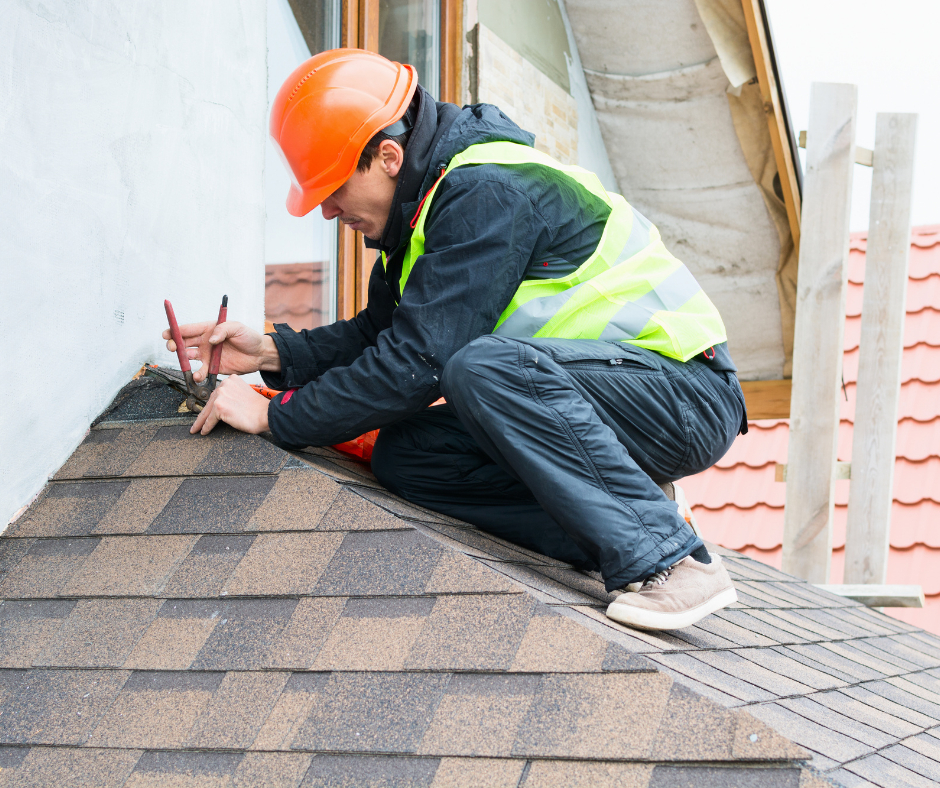
What Happens If You Ignore Needed Roof Leak Repair? | A Homeowner’s Guide
Homeowners should always schedule needed roof leak repair as quickly as possible, to avoid added damage to the roof and the home’s interior. While roof repair might seem somewhat costly, prompt repairs will actually save you money over time!
If you’re new to home ownership or to roof maintenance and repairs, you might note some very important reasons to schedule those repairs at the first sign of damage. It’s also helpful to note a few signs of potential roof damage, so you can call a roofing repair contractor near you as needed rather than waiting until that damage gets more extensive and costly to address.
Signs of Needed Roof Leak Repair
First note some signs of needed roof leak repair that many homeowners might overlook, so you know when it’s time to call a roof repair company near you. Water leaks along interior ceilings can be caused by a leaking air conditioner hose or plumbing leaks; if you’ve ruled out those two issues, have the home’s roof checked for damage and holes.
Water-damaged shingles might tend to buckle or curl; if you notice that your roof’s shingles are wavy or otherwise misshapen, schedule a roof inspection for potential damage. A sagging roof is also in need of immediate repairs! Roof cracks and leaks let out your interior heating and cooling so if you notice a sudden spike in utility costs, have the home’s roof inspected for damage.
What Happens If You Ignored Needed Roof Leak Repair?
To better understand why it’s vital that you schedule roof leak repair as quickly as possible, first note that a home’s roof is constructed in layers. Roof decking is a plywood layer installed over the roof rafters and joists. Leak barriers, insulation, and other underlayment materials are applied over this decking, and then shingles are installed.
Damage to any of these layers can mean roof leaks and cracks. Shingles are meant to direct water off the roof and to attached gutters; missing or torn shingles can then mean standing water on the roof, which is absorbed by that underlayment or roof decking.
Once the roof decking is damaged, cracks and leaks form; these leaks allow water to seep into the home’s interior spaces. Rafters and joists as well as wall studs, insulation, drywall, and other materials absorb that water, softening and then cracking and splitting.
If left untouched, ceiling tiles can soften so severely that they risk collapsing. Trapped moisture in the home from roof leaks can also mean the risk of mold growth. Water dripping from a home’s ceiling can also mean damage to anything underneath that leak, such as furniture and electronics.
Homeowners should also note that the longer you ignore roof cracks and other damage, the more extensive they become! Cracks along roof decking and underlayment can spread. Once mold starts to develop in the home, it also grows and spreads. All of this leads to costly repairs that could be potentially avoided if you scheduled needed fixes at the first sign of roof damage.

Can a Leaking Roof Collapse?
Roof collapse is rare but this doesn’t mean it won’t happen if you ignore needed repairs! Severely damaged rafters and joists or roof decking can splinter and collapse, leading to large holes along a home’s roof. This type of damage is very costly to fix and can make the home unsafe for occupation until you schedule needed reroofing.
While a collapsed roof is rare, note that a roof leak can lead to collapsing ceiling tiles, as said. A home’s ceiling is typically constructed with drywall attached to joists; that drywall absorbs water easily and can then crack and chip. Since nothing is holding up a cracked area, it can then outright collapse, risking damage and injury to anything and anyone below.
How Do You Avoid Roof Leaks?
Poor-quality materials and installation can risk otherwise avoidable roof damage, so ensure you always invest in reputable, brand name shingles and roofing contractors with a proven track record of quality work. Keep the roof clean of storm debris as well, since grit and other residues can work their way under and between shingles, causing damage.
Tree branches scraping on a roof can also damage and loosen shingles so trim back branches as needed. Clogged gutters also lead to standing water that gets absorbed by roof materials, leading to cracks and breakage. You might not associate clean and clog-free gutters with a roof in good repair, but ensure you keep gutters and downspouts in good condition.
Regular roof inspections are also vital for ensuring a home’s roof is in good condition. A roofing contractor can note storm damage, old and brittle shingles, and other signs of needed roof leak repair, so you can schedule fixes as quickly as possible. This will ensure your home’s roof is in good condition and that you avoid otherwise unnecessary repair costs!




